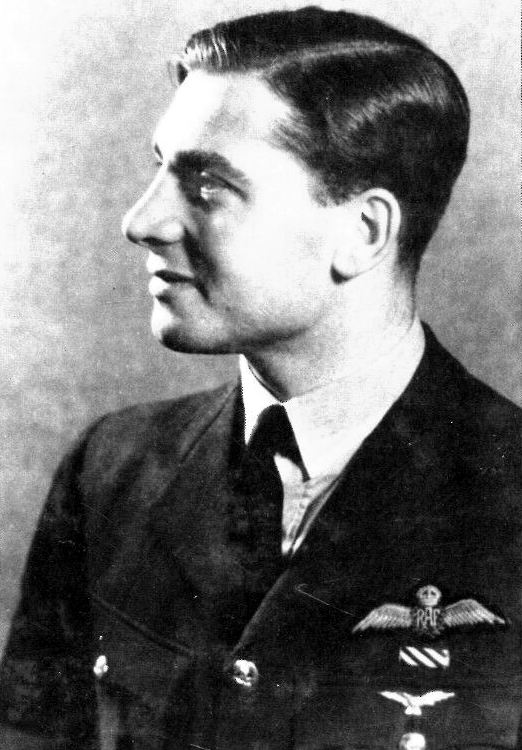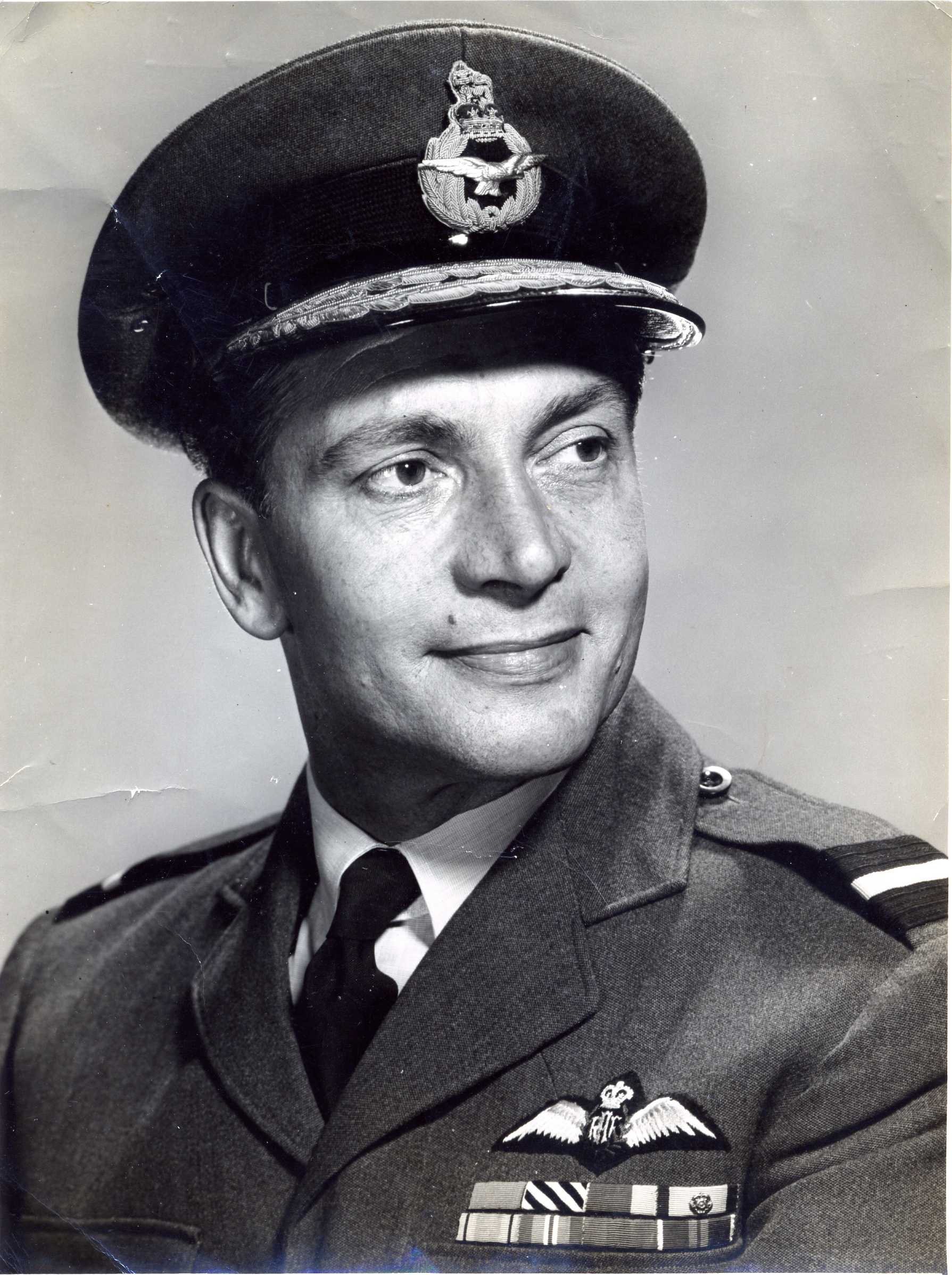Air of Authority - A History of RAF Organisation
John Henry b: 23 Apr 1913 r: 1 Feb 1961 d: 14 Jan 1986
DSO – 7 Sep 1943, DFC – 20 Apr 1943
Sgt: xx xxx xxxx, Act Flt Sgt: xx xxx 1939, Plt Off (P): 1 Apr 1940, Fg Off (WS): 1 Apr 1941, Flt Lt (WS): 21 Mar 1942, Act Sqn Ldr: xx xxx xxxx, Act Wg Cdr: xx Mar 1943, Act Gp Capt: 15 Jun 1943, Wg Cdr (WS): 15 Dec 1943, Sqn Ldr: 26 Mar 1946 [1 Jan 1945], Wg Cdr: 1 Jul 1947 [1 Oct 1946], Gp Capt: 1 Jan 1953, Act A/Cdre: 9 Dec 1957, A/Cdre: 1 Jul 1958.
 |
 |
xx xxx 1929: Aircraft Apprentice, No 1 School of Technical Training, RAF Halton.
xx xxx xxxx: Fitter Aero Engine
xx xxx 1935: Sergeant Pilot, No 104 Sqn.(563385)
xx xxx xxxx: Sergeant Pilot, No 106 Sqn.
xx xxx 1937: NCO Pilot, No 108 Sqn.
xx xxx 1937: Qualified as 2nd Class Navigator
1 Apr 1940: Appointed to a Commission in the GD Branch
xx xxx 1939: Attended Specialist Navigation Course.
xx xxx xxxx: Instructor, No 31 ANS.
24 May 1941: Ferry Pilot, Canadian Pacific Railroad Airways.
18 Mar 1942: Group Navigation Officer, No 2 Group.
xx xxx 1942: Attended Conversion Course, No 1654 HCU
15 Oct 1942: Flight Commander, No 106 Sqn.
xx Mar 1943: Officer Commanding, No 106 Sqn.
9 May 1943: Officer Commanding, No 83 Sqn.
3 Jun 1943: Officer Commanding, RAF Warboys.
20 Nov 1943: Officer Commanding, RAF Upwood.
10 Feb 1944: Command Navigation Officer, HQ Bomber Command.
5 Apr 1945: Command Navigation Officer, HQ Transport Command.
26 Mar
1946: Appointed to a
Permanent Commission in the rank of Squadron Leader
(retaining rank current at the time)
9
Apr 1946: Attended Course No 16, RAF Staff College (Overseas), Haifa.
xx Oct 1946:
30 May 1947: Air Staff Officer, HQ RAF Mediterranean & Middle East
28 Aug 1950: Air Staff, HQ No 21 (Training) Group.
xx xxx xxxx: SASO, HQ No 21 (Training) Group.
xx xxx 1953: Officer Commanding, RAF Hemswell
xx Jul
1954:
Attended National Defence College, Canada.
20 Jun 1955: Director of Operations, British Joint Services Mission - Washington.
9 Dec 1957: Director of Bomber & Reconnaissance Operations.
The first use of what was to become known as the 'Master Bomber' technique was carried out by Guy Gibson during the Dams Raid in May 1943, but it was Gibson's replacement as CO of No 106 Sqn who was to develop the technique on a large scale. John Searby had been a Flight Commander on 106, under Gibson and when Gibson was posted to form 617, Searby took over the reins. However, within a couple of months he had been promoted to Group Captain and appointed CO of No 83 Sqn. It was the Peenemunde Raid of August 1943 that Searby first employed the 'Master Bomber' role when he flew over the German research station in the Baltic directing and redirecting the bombers of the Main Force in order to maintain an accurate aiming point.
John Searby however, was not a product of Cranwell, he had joined the RAF in 1929 as an Aircraft Apprentice in the 19th Entry at Halton. Six years later he had qualified as a pilot and was promoted to Sergeant. Following commissioning in 1939, he attended the Specialist Navigation after which he became an instructor at No ? OTU, flying Blenheims. A spell ferrying aircraft across the Atlantic and then a staff post was followed by promotion to Sqn Ldr as a Group Navigation Officer before undertaking his first full operational tour as a flight commander with No 106 Sqn at Coningsby and later Swinderby. For his work on the night of 17/18 August 1943 over Peenemunde he was awarded an immediate DSO and remained in command of 83 until November when he moved to RAF Upwood as OC. However, his replacement at 83 was shot down shortly after taking command and Searby returned to command the squadron for a further two weeks before resuming command of Upwood. His final posting before the end of the war was Command Navigation Officer at HQ Bomber Command.
Citation for the award of the Distinguished Flying Cross
"SEARBY, John Henry, A/S/L (43128, Royal Air Force) - No.106 Squadron.
This officer has displayed marked determination in locating and bombing the target with precision. His leadership and courage are exceptional. He is an outstanding flight commander whose efforts have been most meritorious."
(Source - Air Ministry Bulletin 9917)
“Acting
Group Captain John Henry SEARBY, D.F.C., Royal Air Force, No.83 Squadron.
One
night in August, 1943, this officer participated in a bombing attack on an
important target at Peenemunde. Enemy
fighters. were extremely active over the target area, but in spite of this Group
Captain Searby executed his difficult task with consummate skill.
He displayed faultless leadership, great courage and resolution
throughout.”
Air 2/4995 has recommendation drafted 20 August 1943 when he had flown 37 sorties (247 hours five minutes).
"On the night of 17/18th, August, 1943, when a heavy and extremely concentrated bombing attack was conducted against the Radio Research Laboratories at Peenemunde, Group Captain Searby, who had twice previously carried out similar tasks, was ordered to remain in view of the target, and by means of radio control, to direct the main bombing force on to the precise aiming point.
This extremely difficult and exacting task was executed with consummate skill and is all the more praiseworthy as it necessitated Group Captain Searby remaining in the well defended target area for 30 minutes, while no less than 20 and probably more bomber aircraft were shot down by enemy fighters. The magnificent leadership, tenacity of purpose and devotion to duty displayed by Group Captain Searby is deserving of the highest praise.
I therefore strongly recommend Group Captain Searby for the immediate award of the Distinguished Service Order."
(Signed by Group Captain, Commanding, R.A.F. Station, Wyton, Hunts, on 20 August 1943). Also strongly recommended by Air Commodore, Commanding, Path Finder Force, No. 8 Group) on 20 August, 1943)
This page was last updated on 16/03/25©
![]() G L Seabrook
G L Seabrook
![]()